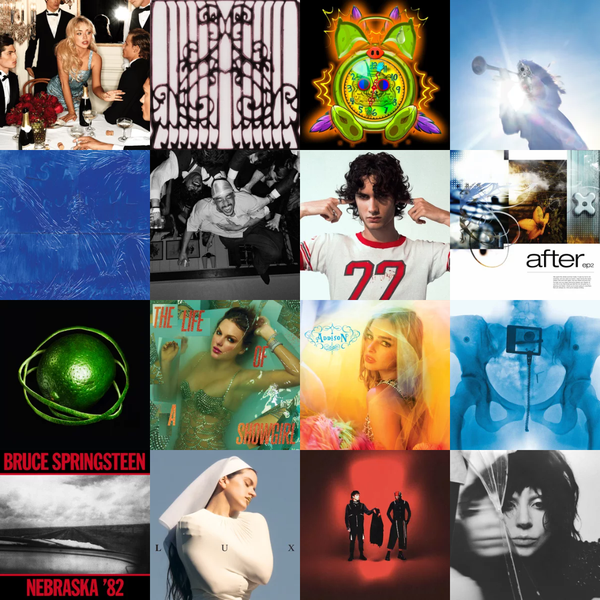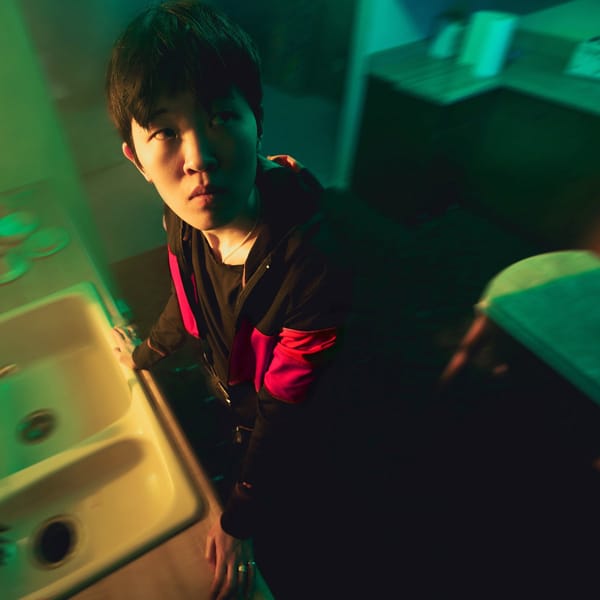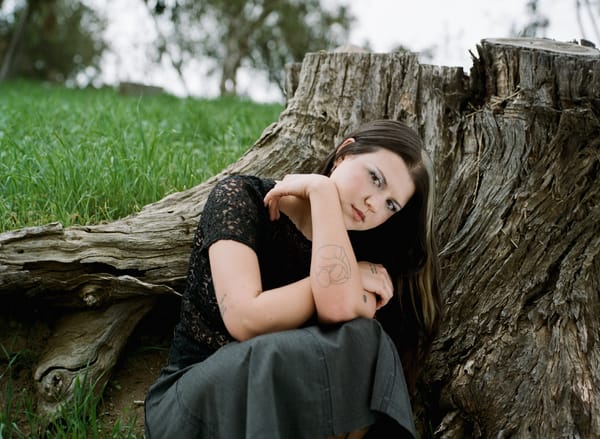Nothing Deep To Say #6: Acloudyskye Reinvents 2010s Alt-Rock On There Must Be Something Here
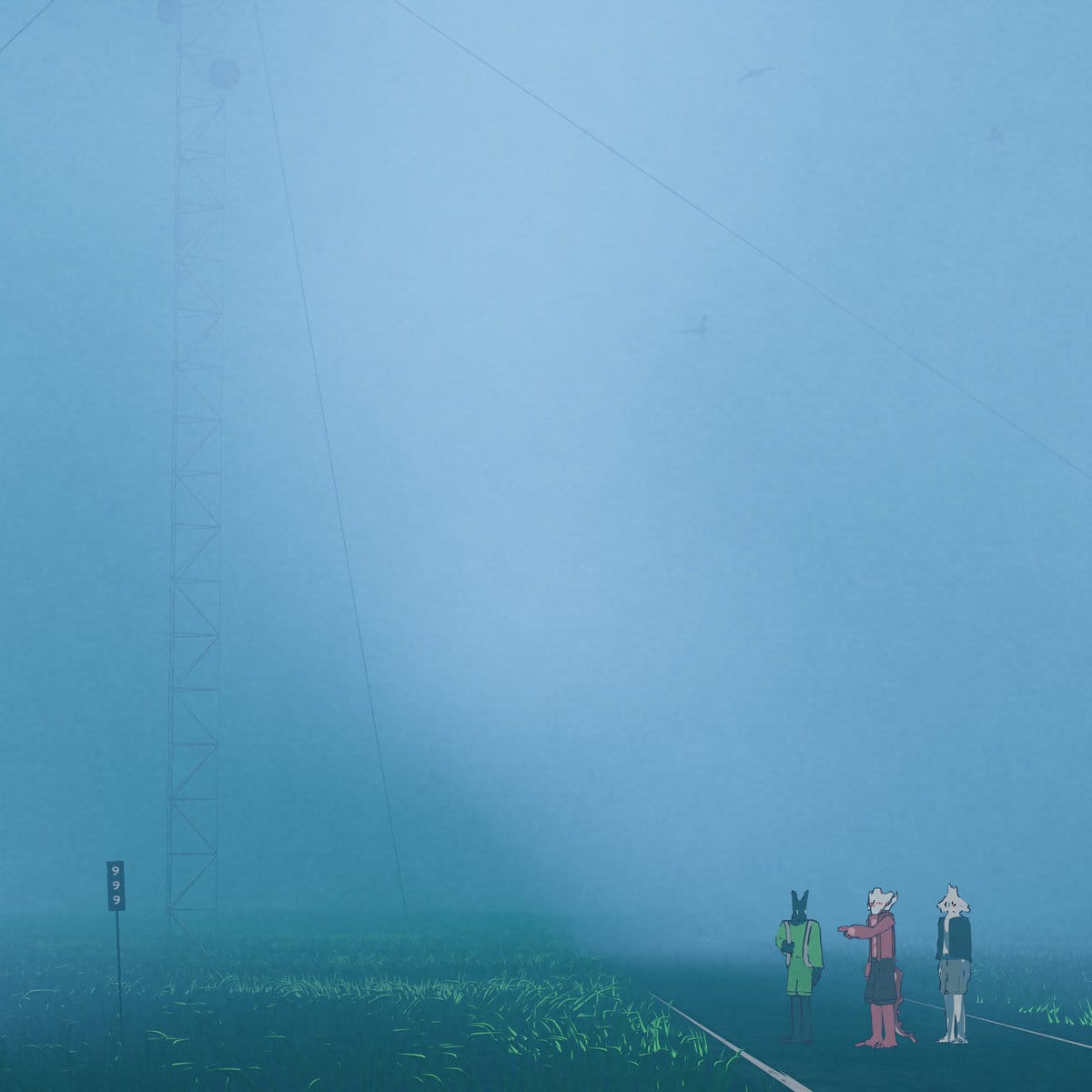
If you’re just joining us, welcome to Nothing Deep To Say, the flagship series of the Transient Peak newsletter. So many queer artists are pressured to focus on their identity in interviews, and I want to give self-producing musicians the freedom to nerd out about their own music – informed by my own experience as a writer, audio engineer, and musician. Feel free to donate to the Ko-Fi if you like this or subscribe to the paid tier, with content not in the main newsletter!
"Crazy that people are just calling any indie rock that's big and noisy 'shoegaze' now", Skye Kothari tweeted under their acloudyskye account when their album, There Must Be Something Here, came out. There are some elements in common with shoegaze - roaring guitars, fuzziness, submerged vocals - but it's more like Coldplay's dreamier diversions or Daughter's darker interludes than, uh, My Bloody Valentine. I know a lot of people just followed me because of the Chappell Roan article and Charlene Kaye TikTok I reposted, so if you’re new here, let me be clear: this is my shit.
Kothari's vocal style has much in common with Elena Tonra from the atmospheric folk band Daughter, a sturdy presence against the swirling guitars and crashing drums behind them. I initially thought of Gary Lightbody from Snow Patrol, or the Boxer Rebellion’s jam “Diamonds”, but Daughter’s influence is unmistakable once mentioned. (Kothari’s in good company; Julien Baker and Ethel Cain cite Daughter as an influence too.)
Despite Kothari’s roots in EDM, this is a pop-rock album through and through, with unexpected detours into slowcore and post-rock. There’s even a straightforward folk song on “Ditch”. Kothari puts their vocals front and center for the first time, putting together a narrative about two characters falling in love in a post-apocalyptic landscape. (New Yorkers; they're playing a show on May 18th at Purgatory!) Those are the characters on the cover, designed by Kothari themself - as was the video for lead single “Team”.
Acts like Acloudyskye and albums like this are why I started this newsletter and why I love music journalism: someone in their bedroom making hooky pop music fit for arenas.
Stream the full album below, and subscribe to the paid tier where we talk about “Quicksand” and “Relay”
Tell me the story so far.
The way I started making music was because Skrillex’s Scary Monsters and Nice Sprites came out, and I had never heard anything like that before in my entire life. I literally googled “how to make dubstep” online, and I came across this site called AudioTool, which was like SoundCloud, but it also has its own built-in DAW. It's a really weird thing, but it had its own community and all the music on there is electronic because the DAW has its own custom synthesizers and sample banks. So I got started on that, and because I was surrounded by a lot of other people who were making electronic music, that's just what I did for a while. But as more and more time went on, especially when Hyperpop and Digicore really started to becoming a thing, I saw a lot of the artists that were in my space who were making future-based electro, they went off in that direction, and I found myself going in another direction, which was just making indie rock or guitar oriented music.
It made more sense to switch to that, where it always felt like for hyperpop you need to project a very off the wall kind of personality and a lot of music. I feel like that wasn't me. I prefer stuff that's a bit more understated. So when I started that transition into making indie rock, it was definitely like, “I'm going to be quiet on the vocals. The songs are going to start off mellow and then build up to this loud thing”, and now I'm getting more comfortable with making music that's more in-your-face. So it's been a slow transition into making energetic electronic music to, indie rock, then going back to making something that's energetic.
How did you learn music production in the first place? Was it just through playing around on AudioTool?
Yeah, exactly. I had never worked with synthesizers. I had taken guitar lessons before. I used to mess around in GarageBand. I had this really bad Mac that had 512 megabytes of RAM back in the day. That was my first computer, and it had a garage band on it, so I would mess around and make really silly sounding stuff in there with my brother. We would just record our voices into it and then just put effects on it. So being about it now, that was my actual first introduction into a DAW. When it comes to actually making music AudioTool and just messing around with the synths, also on AudioTool there's a button on a lot of tracks where you can just click it and it opens up the project file of whatever song you're looking at.
That was a big thing for me. If the artist enabled it, and they were a really good artist who had been using the site for a while, and was very experienced, you could learn a lot of really interesting things from them by just going around and seeing how they did stuff.
What are some of your formative influences?
A big one for me was Daughter.
“Ditch” reminds me of their song “Fossa”!
That's probably my favorite song off of Not To Disappear. I had a crazy experience during lockdown where people were going back to school, and I ended up testing positive for Covid, so I was put in the lockdown dorms in my university. I re-listened to that album, and for some reason, some of the songs that never hit for me before hit again, and I just remember dancing around my little quarantine room to “Fossa.” Growing up, my dad was always playing a lot of Radiohead, some Pavement, the Pixies, but Daughter is definitely the biggest one out of all of them.
Let’s talk about the instrumentation on the record. What’s the ratio of real instrumentation to virtual instruments?
Gotcha. On the album, it definitely varied a lot track to track. fast. I'm not that good at guitar. I wouldn't be able to do that live. For the guitar, I was just trying to look for new guitar VSTs to be able to write melodies that I wouldn't be able to play, but I knew would make for a really interesting track, and I found Ample Sound Telecaster. I actually have a Telecaster, and that's the guitar I was using for basically all the other parts of the album, so I wanted something that matched that.
I’d say “Surface” is more like 75 to 25 stuff I recorded live. There's some background chords that I'm playing, I'm pretty sure that are layered in there, but the rest of it is a lot more digital.
What got you into visual art?
I started making visual art because of Minecraft animations. As a kid, I really wanted to make Minecraft animated music videos, but the program that I used to do that was Blender. And after a year of trying to make stuff, I realized, “Hey, this isn't the only thing this program can do.” I can do my own stuff. And so I started making a lot of weird abstract landscapes stuff that was very inspired by just sci-fi concept art, the kind of stuff you find on ArtStation. There's a specific artist I like a lot, Anton Fadeev. I wanted to do art like that, but I also realized I had to actually put characters into the worlds that I was making. Otherwise it kind of felt empty.
The first character I made was the character with the green poncho and the horns, and for a while they were the only character. And then I created Isla, who's the character on the right, and they go on an adventure that’s the background narrative of the album. Part of that came from being really into Gorillaz lore. I would always try to find all the different clips that they made with the characters on YouTube, and you can never find all the parts in consecutive order. So it was always super jumbled, and I feel like I wanted to do something that was very linear and just accessible. You can listen to the music and if you're interested about what's happening in the covers, you can find it pretty easily.
“Left” and “Ends” have a call and response element, is that the other character speaking?
Yeah, a hundred percent. I mean, well, for "Left", it's the other character on "Emds" It's kind of the subconscious of the - I didn't really name the characters, but it's kind of like the character who doesn't get possessed thinking about how to move on. So it kind of like those background lyrics are giving them advice because those ones are just me, but super pitched up, classic format shifting stuff. That other figure is gone in a sense.
Can you talk about how “Surface” and “Ditch” factor into the narrative?
One of them falls in love with the other, but there's a lot of other forces happening outside of their control, and one of them ends up getting possessed… and then the world ends. “Surface” is definitely about initial feeling for this person and having someone you want to run away with. “Ditch” is more of a bad vision of what's to come - that’s why the lyrics are about glaciers crashing down and poison in the rivers. I spent a lot of time thinking about how we, as species on this planet, affect the world around us, and not even necessarily in a bad way, but just how we affect each other, the life around us.
BEAUTY IN THE BREAKDOWN:
“Surface”
LEAD GUITAR:
Why is the guitar detuned by 3 semitones?
I really liked the tone of when it was at a higher pitch, but then when I went to transpose it down, it would change the tonality. So this is pitched down by -3 semitones. I wanted that same tone, but at a lower pitch and didn't want it to change anything.
And wait, you have two reverbs?
I was reading about how Lorn processes some of his synths, and how he’ll stack reverbs with different settings on top of each other to get a more interesting sound. So many of my project files have various scattered deactivated plugins. I wanted some more air to one reverb, but I still wanted some low-end boom.
There’s also my signature guitar tone where I just turn everything into noise. (Laughs)
My reasoning behind this is that sometimes I want to add a bit of white noise to the track because classic EDM production moves by adding white noise to fill out the frequency spectrum. But I want to do it in a way where when you upload it to SoundCloud, it doesn't just get rid of the noise, because the MP3 compression just sees it as something to throw out. My way of doing that is using a vocoder set to “noise” with four bands. So it's reactive to what the lead is doing. It sounds terrible by itself, but with the lead, it gives it a bit of a different texture of noise. It's just, I dunno, a more interesting way of having that frequency filling out action.
RHYTHM GUITAR (doubled with Wavetable synth):
The main rhythm guitar is just playing two notes, it just builds chords out of different single [monophonic] instruments that are playing throughout the track. If you take the reverb off, it’s just an EDM synth. But I really like it and I use it for a lot of the brighter tracks that I do. To me, the Wavetable synth is a very nostalgic sound because it's what I grew up listening to. So it's always in the background of some of these tracks.
LIVE GUITAR:
I have a real telecaster and I have an acoustic one. But I went out of my way for this album to have my own electric guitar because in the past I was using my brothers’, but since I was at college, couldn't do that anymore. So I got my own! I know in a lot of post-rock stuff, the Telecaster is a go-to, so that just made sense for me to get.
Do you have a MIDI keyboard?
do have a MIDI keyboard, but I basically never use it just because I don't really know how to play piano that well, so it's easier for me to program it. For me, I'm just used to doing it on the computer, which is faster than plugging in a MIDI keyboard and doing it from there. try to minimize the amount of things that I need to connect to my laptop in order to make music. I would have my audio interface, my hard drives, and then my mouse, and that was basically taking everything up. So I would've had to get a USB hub to plug everything in, which I was just like, I can just program it in.
DRUMS:
KICK:
SNARE:
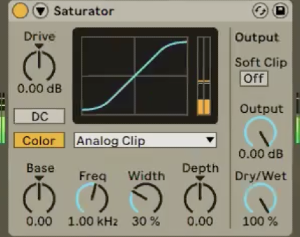
The default mixing on the drums is super weird. So I'll just isolate just the different instruments and process them separately. I use a bit of soothe2. I feel like I need to stop myself from using it a lot of the time because it's so good. But when it's used a lot, you notice it, especially on vocals. It’s an amazing VST, but got to be careful for sure.
VOX:
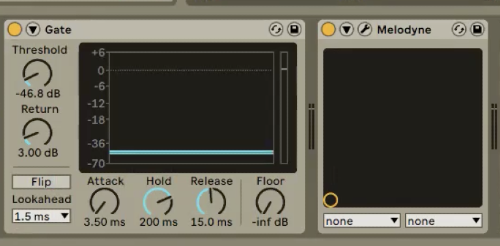

I used the Blue Yeti for vocals. And I did it in a really weird way. I wanted to record it into my audio interface so I could hear myself while I'm singing, but it doesn't have a proper plug to do that. It doesn't have the XLR, is what you call it to do that. So I had a weird XLR to 3.5 millimeter headphone jack thing that went into the headphone jack on the microphone into the auto interface. So there's actually, I'll play it again for a sec. There's a background noise that's very apparent if you listen to it soloed. And that's just coming from the fact that I'm using this really weird cable to hook it up to be audio interface.
Synth solo:
A while ago, I downloaded some sound banks that were just people recording different mouth sounds. The one I chose was called "Ooh"; it definitely sounds like something two people in the room made, but it was just on the internet and I downloaded it. I was looking for a lead sound here, and it worked really well. It has this weird square wave, but not quite down to it. I don't really know how they managed to get the sound, but it's very specific. I thought it worked really well for the track.
If you don’t have a MIDI Keyboard, how do you get the pitch bending effects?
Through Note Expression. It's funny, I didn't realize Ableton had this for the longest time. So whenever I would use MIDI clip pitch control stuff to automate stuff, which was not ideal, and I'm very glad I found this out, this would've been a lot harder to do.
DITCH:
This is the first song you made for the record - is this when you knew that you wanted to just completely change direction?
Yeah, after I made What do you want? I was really burnt out of being in a DAW and arranging stuff digitally. I wanted to just find something that was a new, refreshing way of making music, and I kind of knew how to play guitar. So I started fiddling with the acoustic guitar in my room at college, so that was the one guitar I had there. So I was just trying to find interesting chords that would sound good, and I found there was this one progression that sounded good in normal tuning, and so I started singing over that, and I recorded this demo on my phone, and then that ended up becoming the track. For a while I wanted to make it more of an electronic song - there's a different version with the “Ditch” lyrics and melodies that's just a completely different track more in line with my older stuff . But I really wanted to commit to something that was a lot more natural for me and just more fun to make. I felt like I had been making the same kind of songs over and over again. For the last five years, I've done so many songs where it's just "slow buildup to big synth drop", and I wanted to get out of that pattern. I wanted to just switch it up. I still love that kind of music, that's never going to get old for me, but I knew that can't just be my whole musical identity.
Acoustic guitar:
Acoustic guitars are very hard to get sounding the way I want them to from VSTs. They always have a very bright professional quality in them, and I want it to sound shitty. But it was definitely very fun to record this very fast strumming pattern. There's a lot of surgical EQ cuts here, just because the room recording was, I had a very oddly square room, so stuff was bouncing all over the place.Acoustic guitars are one of my least favorite things to mix. There's something about the high end that's just difficult for me.
DRUMS:
I had a couple different kick layers that I was experimenting around with, and these are the main two that got used and layered on top of each other. And I just used vinyl distortion to get them similar.
Are these all from Splice?
Yeah, I did use the snare from a Kontact session kit. So I have this whole VST just to use one of the sounds from it, which is kind of funny. But yeah, I’m just putting [stock distortion plugin] Erosion on it.
GANG VOCALS:
I felt like this ending of the track was this very cathartic moment, and I just wanted to go whole folk-recording and just have some of those ‘woahs’ in there. It was really silly, but it makes the ending a whole lot better for me.
